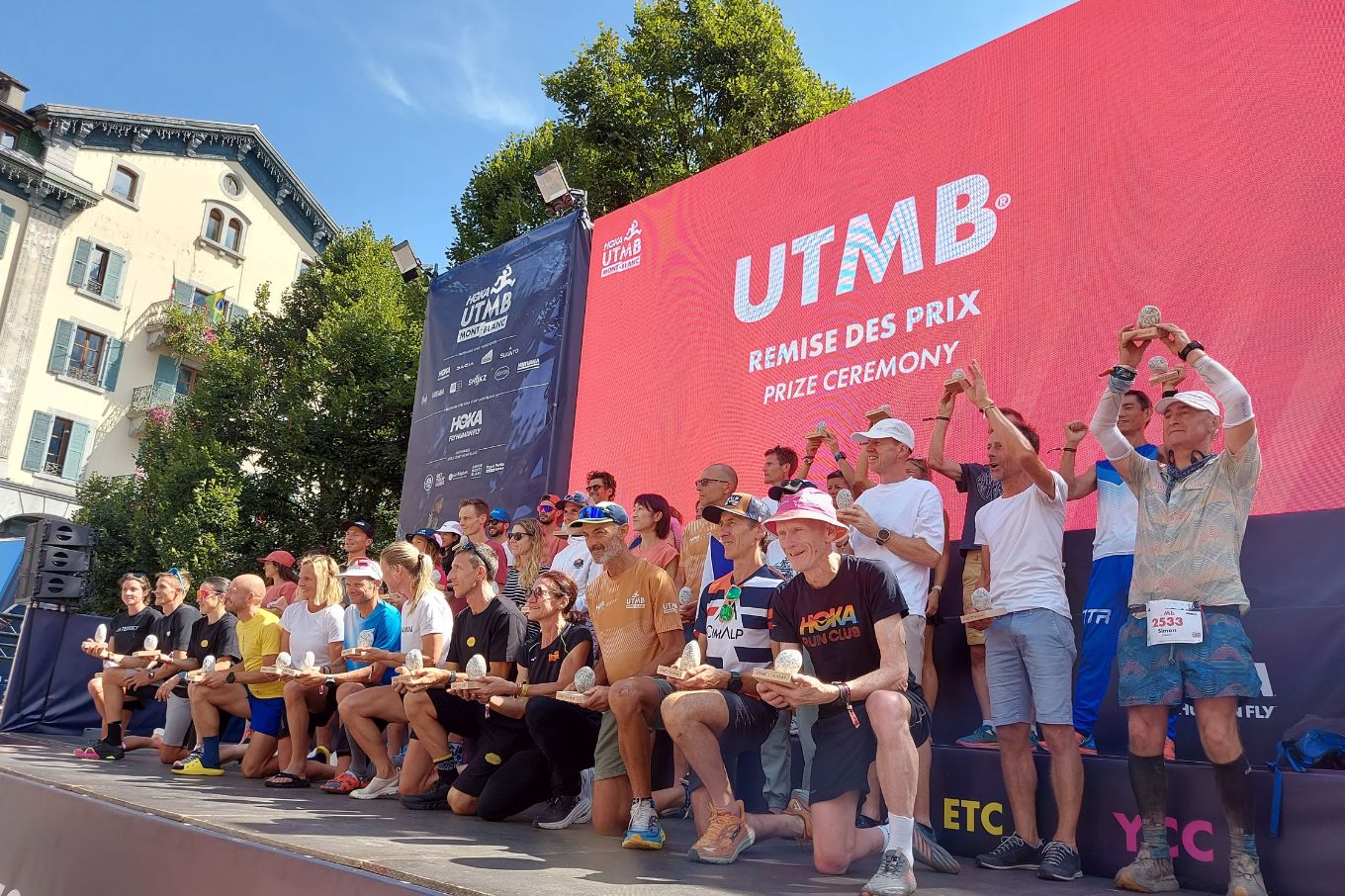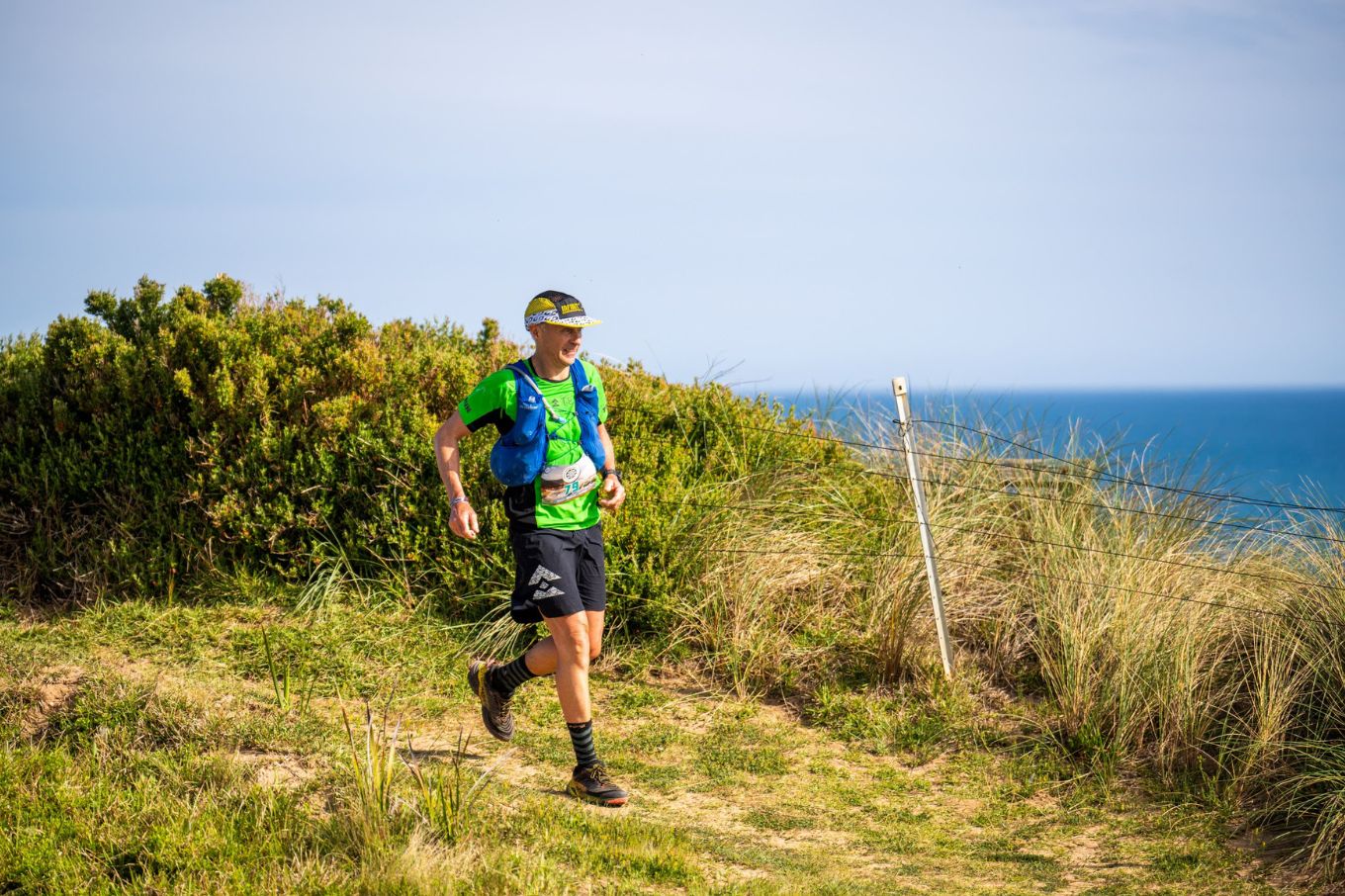Dan King's easy speed training philosophy
Words: Brad Dixon
In distance running, personal bests don’t have to fade as the years advance.
Dan King, an American runner in the 60-64 age bracket, exemplifies this with his astonishing trio of records achieved in 2020 on December 11. In a single day, King clocked a 4:52 mile (then a world record), a 9:58 3000m (American record) and a 16:48 5000m (then American record), setting a new standard for runners in his age group and offering inspiration for athletes everywhere.
King’s approach to training, which he dubs ‘Easy Speed’ has garnered attention not only for its efficacy but also for its ability to minimise injury risk while promoting impressive performances. King runs track, and cross country, but I believe trail runners will also benefit from this unique way to blend speed work into the training week.
This article delves into the core of King’s speed training regimen and shares his supplemental tips that promise to benefit any runner, regardless of age, type of running, or experience level.
Base Training With Easy Speed
My coached athletes complete some form of speed work all throughout the year. There may be less of it with less intensity, but speed work is useful for technique, and keeps the system injury resilient with force through the muscle tendon units and ligaments.
King’s base training incorporates key Easy Speed sessions, consisting of 6-8 x 1km repeats at marathon to half-marathon pace, interspersed with 400-600m of easy recovery jogging. These sessions are part of a weekly routine that also includes a mix of other runs, tailored to the upcoming races, and cross-training activities such as cycling, walking, swimming and strength training. This varied approach helps maintain overall cardiovascular fitness without overtaxing the body during the off season.
Using the Easy Speed method trail runners could then have more room in the week to fit in specific gym strength work as the controlled speed will not require a 36hr buffer at either end of the session.

Racing Season Strategy
During his racing season, King adjusts his Easy Speed sessions to include slightly faster, shorter intervals: examples of this is 6-10 x 400m at 10km pace with 400m recovery, and up to 14 x 200m at 3km pace with 200m recovery. He also introduces a 10-second walk before and after each repetition to optimise recovery.
Many of my athletes have an unhelpful belief that walking is not helpful during running training. King shows that walking before and after these run reps maximises recovery and allows the athlete to get more out of the work. This method allows him to work on race-specific speed in a controlled manner, demonstrating that record age group times are achievable without pushing the body into the danger zone of anaerobic overload and excessive lactate build-up. As trail runners require the mixture of strength and speed endurance, this type of controlled effort will give maximum benefit with minimal injury risk during the pre and racing season.
Dan King’s Three Training Hacks
Uphill Workouts: Once a week, King tackles uphill sessions to bolster calf strength and reduce ground impact forces. Depending on the season, he alternates between longer, steady climbs and shorter, high-intensity hill reps. It’s a potent tool for any runner, especially trail runners looking to build power and endurance efficiently.
Emphasis on Recovery: As athletes age, recovery becomes paramount. The body’s ability to rebound from stress diminishes over time, necessitating greater focus on rest and recovery. King prioritises sleep and nutrition to supercharge his recovery process and maximise performance gains. Recovery tools are under-utilised by every athlete I coach. The younger runners still need to incorporate recovery into the week to maximise performance gains and develop lifelong habits.
Setting Ambitious Goals: King believes in the power of setting lofty goals. Even if the ultimate objective isn’t reached, the pursuit itself is transformative, guiding daily habits and maintaining a clear trajectory for personal development and athletic progress. Taking the longer-term view, and not putting extra pressure on yourself is so important in this ‘stay hard’ Goggins culture.
Listening to the body in the now while striving towards those big far off goals is so important for consistent growth and performance gains.
A Training Philosophy for All
The Easy Speed framework is not just for elite athletes or record chasers; it’s a versatile training philosophy that caters to runners at every level. Whether you’re dipping your toes into the world of speedwork or you’re a seasoned trail runner seeking a safer alternative to traditional high-intensity training, Easy Speed offers a sustainable path to improvement. By balancing structured workouts with adequate recovery and strategic goal-setting, runners will love this approach to getting speed work incorporated in the training week.







